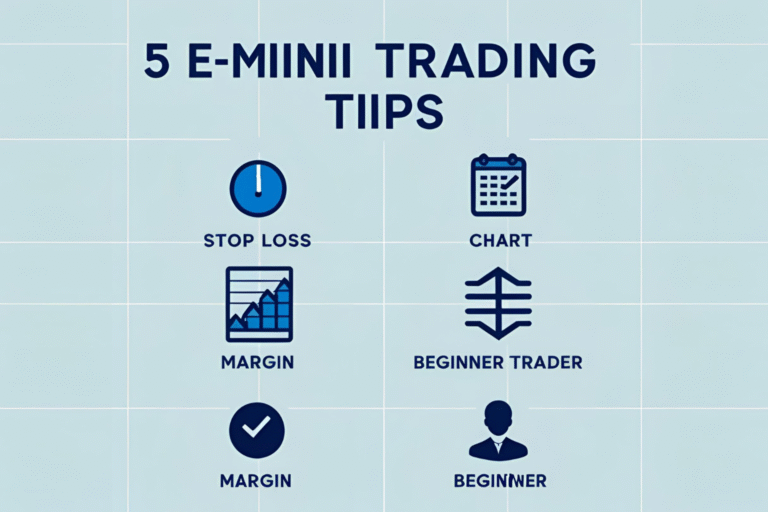How to Build an E-mini Trading Plan for Success
Successful E-mini traders don’t rely on guesswork—they follow a structured plan. Whether you’re trading the E-mini S&P 500 (ES) or Nasdaq 100 (NQ) futures, having a well-crafted trading plan helps eliminate emotional decisions, manage risk, and boost your consistency. In this post, you’ll learn how to build a practical E-mini trading plan step-by-step.
1. Define Your Trading Goals
Ask yourself:
- Are you trading for income or long-term growth?
- Will you trade full-time or part-time?
- What is your monthly target and maximum acceptable drawdown?
Example:
“My goal is to make 5% monthly with no more than 2% loss per trade.”
2. Choose a Trading Style That Fits You
Common styles for E-mini futures include:
- Scalping: Quick in/out trades lasting minutes
- Day Trading: Holding positions within the session
- Swing Trading: Holding trades for days
Pick a style based on your availability, risk tolerance, and personality.
3. Set Entry and Exit Rules
Clearly outline:
- What setups will you trade? (e.g., breakout, pullback, VWAP bounce)
- What confirms entry? (e.g., candle pattern, RSI divergence, trendline break)
- When will you exit? (e.g., target price, trailing stop, support/resistance zone)
Example Rule:
“I will enter long above the 20 EMA on a higher high + volume spike. Stop 6 points below entry, target 2:1 reward.”
4. Implement Risk Management Guidelines
This is non-negotiable. Include:
- Maximum risk per trade: 1–2% of your capital
- Daily loss limit (e.g., stop trading after 2 losing trades)
- Position sizing based on margin and volatility
Use a margin calculator and always define your risk before entering a trade.
5. Schedule Daily and Weekly Routine
Consistency creates discipline. Your routine should include:
- Pre-market preparation: Mark key levels, check news events
- Live market monitoring: Focused screen time with alerts
- Post-market review: Record trades in a journal and grade your performance
6. Track Performance and Refine the Plan
Use a spreadsheet or journal to log:
- Trade entry/exit
- Reason for the trade
- Outcome and what you learned
Update your plan monthly based on performance and market changes.
Example Plan Snapshot
| Component | Rule Example |
|---|---|
| Style | Day trading ES futures |
| Setup | VWAP bounce + RSI confirmation |
| Risk Per Trade | 1% of $10,000 = $100 max loss |
| Tools Used | TradingView, NinjaTrader, economic calendar |
| Review Frequency | Weekly journal review + monthly plan revision |
FAQs
How long should a trading plan be?
1–3 pages is enough. It should be detailed but clear and actionable.
Can I trade ES and NQ with the same plan?
Yes, but adjust for volatility—NQ is more volatile, so position sizing and stops may differ.
Should I include news analysis in my plan?
Yes. Even if you’re a technical trader, noting major events like FOMC or CPI helps avoid surprises.
What’s the #1 reason new traders fail without a plan?
They trade emotionally—without predefined rules, losses pile up and discipline fades.
How often should I update my trading plan?
Monthly is ideal. Update it after reviewing your performance and market behavior.



